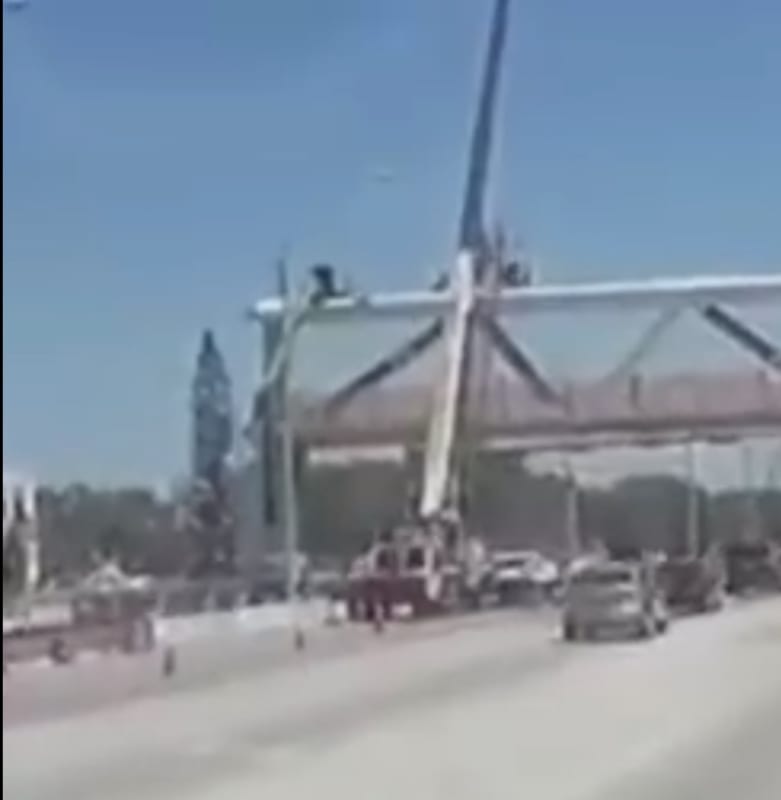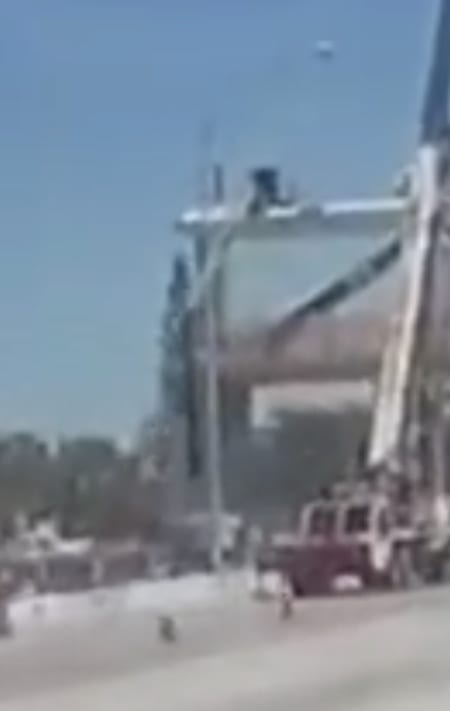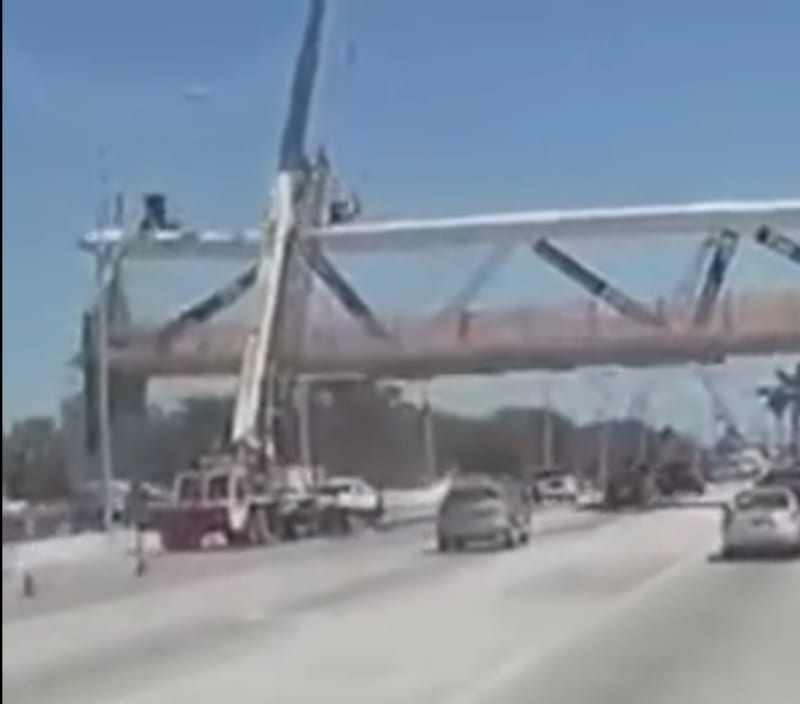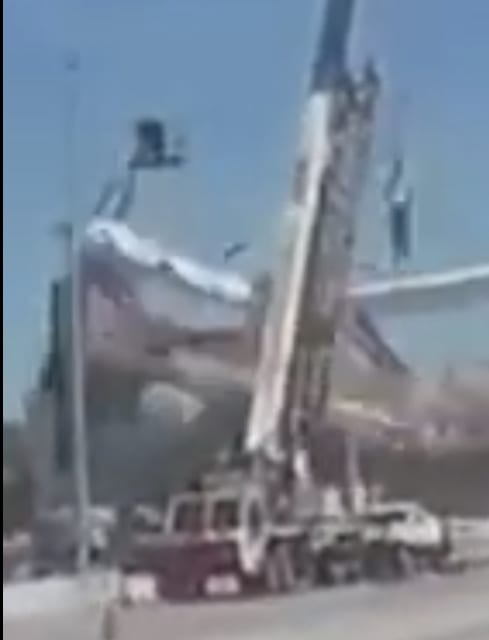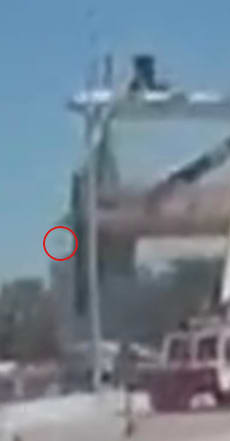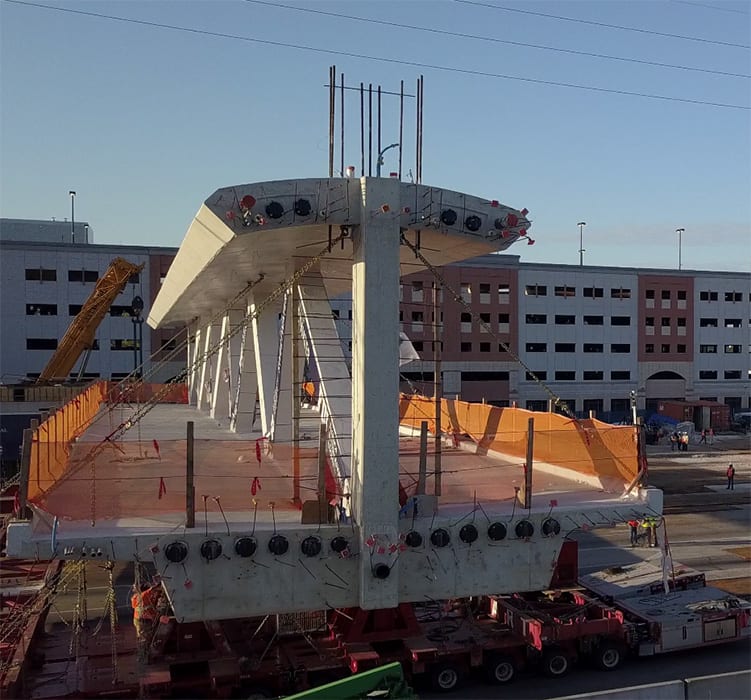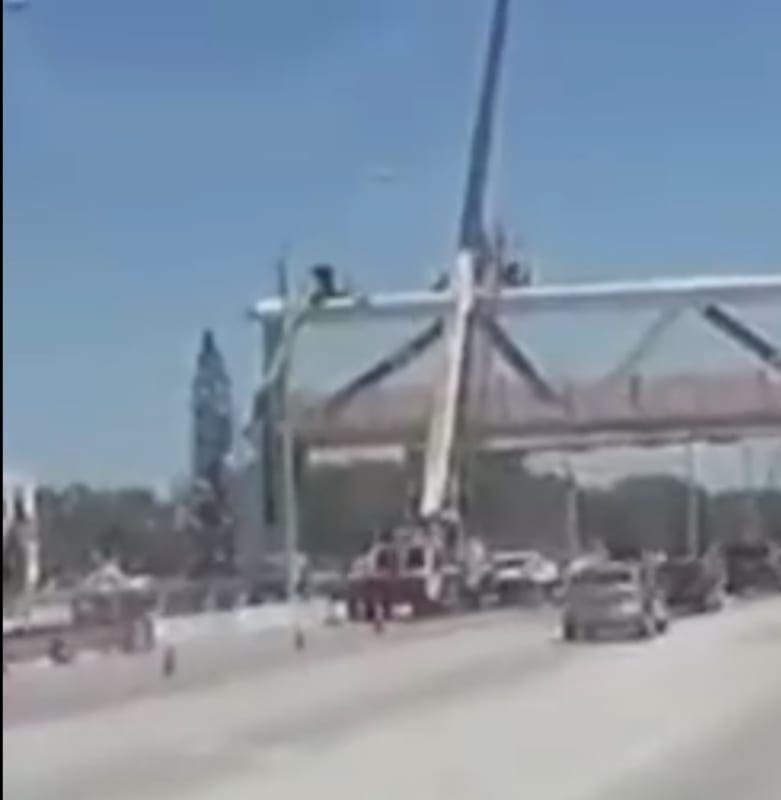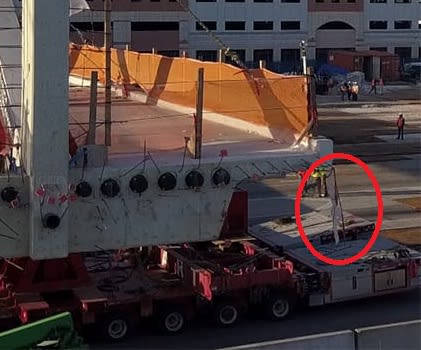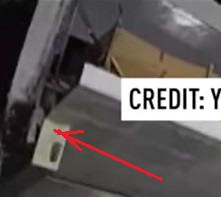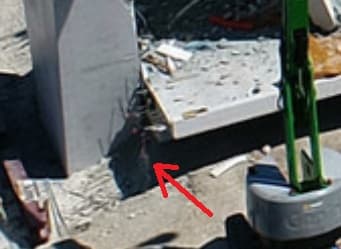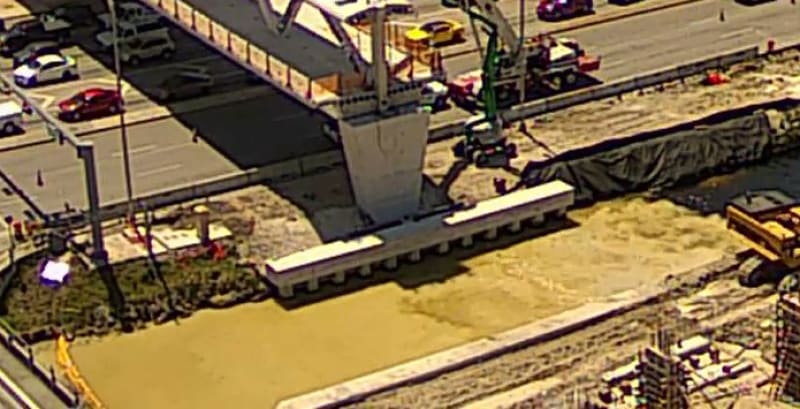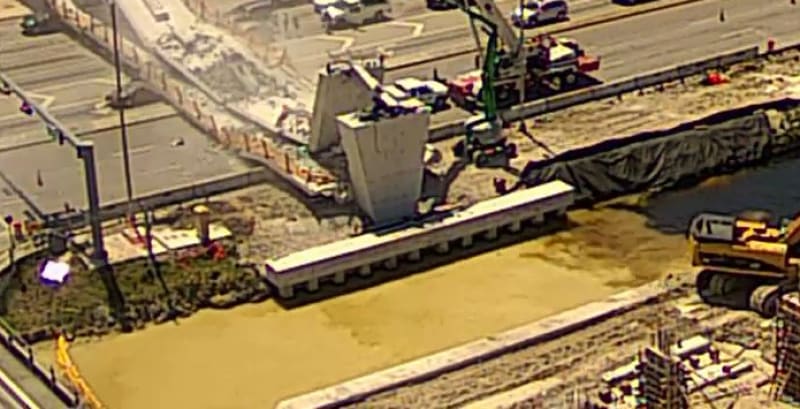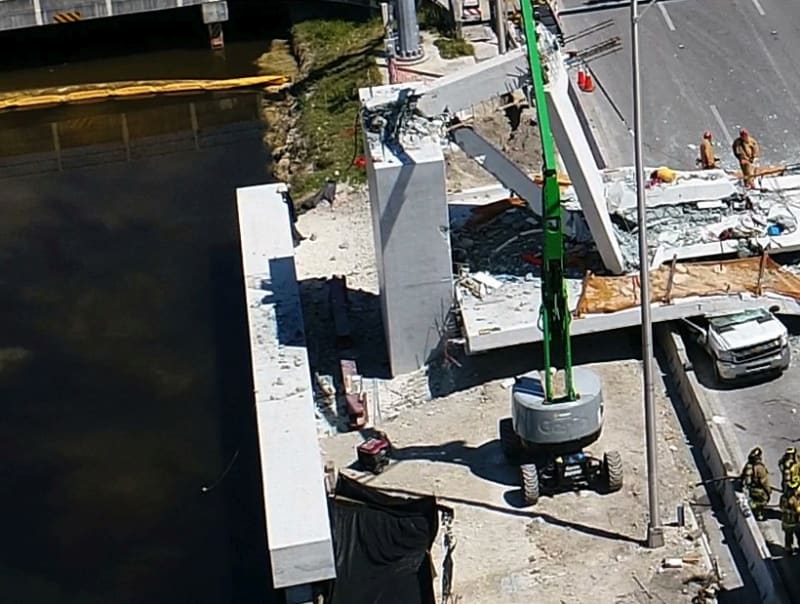SFCharlie (Computer) 9 Jul 19 15:34 said:
It seemed like there was more missing than was accounted for on the top of the pier and the deck.
The missing stuff was probably in the big debris cloud visible in dash cam frames 079-080. I think it was caused when the 12-deck joint literally exploded.
(Apologies in advance if somone figured this out earlier - this thread is getting way too long.)
When the canopy and deck both hinged north of member 10, the bridge was divided into 4 sections:
[ul]
[li]A solid truss between members 1 and 10, rotating counter-clockwise (when viewed from the west) about a pivot point on the south pier.[/li]
[li]A solid "L" shape formed by member 12 and the north canopy.[/li]
[li]The deck section north of member 10.[/li]
[li]The remains of member 11.[/li]
[/ul]
EDITED to add analog clock analogy, with truss pivot point located at center of the clock:
The "L" shape and north deck may have initially remained connected in some way, but as the 1-10 truss fell:
[ul]
[li]The north canopy and north deck were pinched together at their southern ends (bending the "L" shape if member 12 is still firmly anchored to the deck).[/li]
[li]The north deck was pulled southward because its hinge point is below the truss pivot (big clock hand moving from 9 o'clock toward 8).[/li]
[li]The north canopy was pushed northward because its hinge point is above the truss pivot (big clock hand moving from 10 o'clock toward 9).[/li]
[/ul]
These effects spring-loaded the "L" shape, and 12-deck joint ruptured explosively (based on the rapid growth of the debris cloud, visible in the dash-cam video that was running at 5fps) as the north deck was literally pulled out from beneath member 12, and the bent "L" shape straightened itself out.
The spring-loaded "L" theory might also explain the apparent "bent" shape of column 12 seen in traffic cam Frame 057, which was taken at about the same time as dash cam Frames 077-078.

